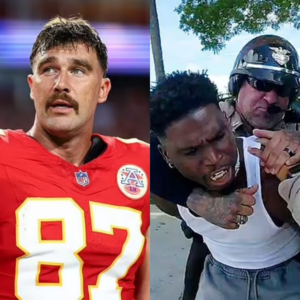 Dallas Cowboys helmet (Photo by Ronald Martinez/Getty Images)
Dallas Cowboys helmet (Photo by Ronald Martinez/Getty Images)
The Dallas Cowboys announced on X/Twitter that Allen “suddenly” passed away on Sunday while he was vacationing with family in Mexico. Allen and his wife, Janelle, had two daughters and a son together.
Allen was a key member of the Cowboys’ success during the mid’90s, helping them to a Super Bowl 30 championship in the 1995 season that cemented them as a dynasty. The 6-foot-3, 325-pound guard was a seven-time First-team All-Pro and an 11-time Pro Bowler in his Hall of Fame career.
Allen was a second-round pick (46th overall) by the Cowboys in the 1994 NFL Draft. He played college football at Butte and Sonoma State before emerging as one of the greatest draft steals in the history of America’s Team.
The Dallas Cowboys icon was also named to the 1990s and 2000s All-Decade Teams, as well as the NFL’s 100th Anniversary All-Time Team. In 2011, Allen was added to the team’s Ring of Honor.
Allen played for Dallas from 1994 to 2005 before spending his final two seasons with the San Francisco 49ers.
Our thoughts and prayers are with Larry Allen’s family and friends, as well as the Cowboys organization, during this devastating time.
Larry Allen Was Pivotal In Dallas Cowboys’ Dynastic Run
The Dallas Cowboys had won back-to-back Super Bowls in 1992 and ’93, with both victories coming against the Buffalo Bills.
But with the Green Bay Packers emerging as an NFC power, and with the San Francisco 49ers in the midst of their own dynastic run, the Cowboys needed a couple of pieces to win that third Super Bowl.
Larry Allen proved to be the difference-maker in Dallas, adding that game-wrecking offensive lineman to block for Emmitt Smith while helping keep Troy Aikman upright. If not for Allen, the Cowboys might have never won a third Super Bowl in the ’90s, nor remain a consistent playoff contender in the back half of the decade.
News
Everyone Noticed The Same Thing About Angel Reese After Watching Mic’d Up Footage Of The Sky Rookie At Practice (TR)
Angel Reese (Photo via chicagosky/Twitter) Angel Reese has been making waves in the WNBA as one of the most talked-about players who could either talk about the Rookie Of…
Travis Kelce reacts to Tyreek Hill’s detainment ahead of Dolphins’ Week 1 win vs Jaguars (PO)
Travis Kelce and Tyreek Hill may no longer be teammates on the Kansas City Chiefs; the former is rooting for Hill, especially after the events that transpired…
Jason Kelce’s ESPN debut left Taylor Swift, brother Travis ‘dying’ with laughter (PO)
Travis Kelce is still in the thick of football day in and day out. However, his brother Jason Kelce has switched to broadcasting after his retirement. The…
What did Taylor Swift say about Travis Kelce at 2024 MTV VMAs? Pop star’s acceptance speech on Chiefs TE goes viral (PO)
Taylor Swift and Travis Kelce have been dating for a long time. However, she has not said the “magic word” publicly until now. The relationship between the…
Angel Reese Reveals Shocking Abuse She’s Had To Deal With Because Of Caitlin Clark (TR)
Caitlin Clark and Angel Reese (Photos via Getty Images & @TheDunkCentral/X) Angel Reese recently discussed the abuse she’s had to endure amid her WNBA rookie season, thanks to…
“Sneaky racist”: Dave Portnoy rips Travis Kelce’s outfit at Chiefs’ season-opener vs Ravens (PO)
Travis Kelce often makes headlines for his outfits, whether it’s a date night with Taylor Swift or a Chiefs game day. While some are fans of Kelce’s…
End of content
No more pages to load
Relative Articles
None found






